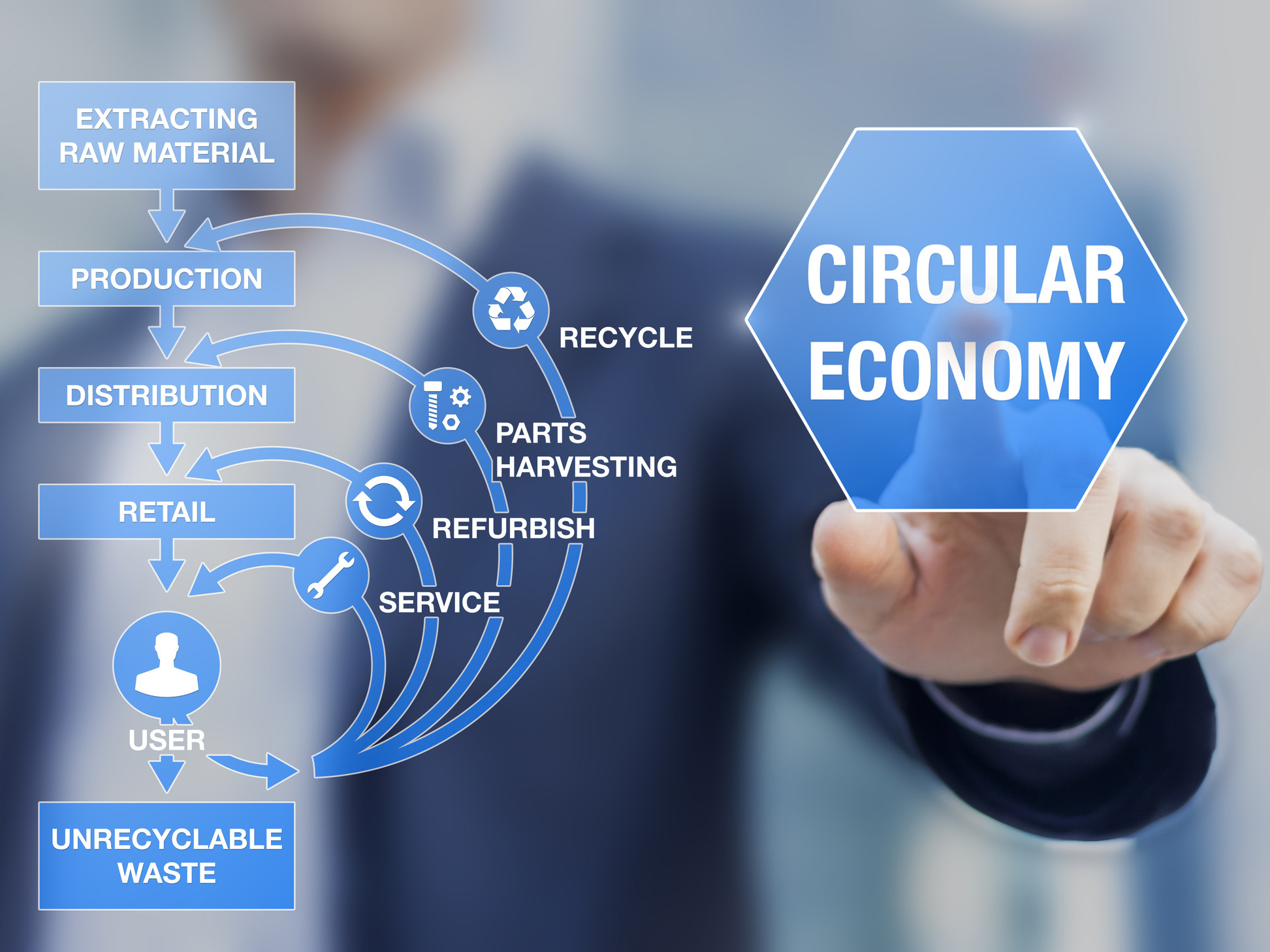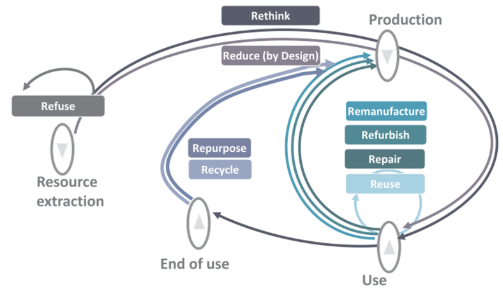The circular economy is a sustainable economic model that uses resources efficiently and avoids waste. In contrast to the linear “take, produce, use, dispose” principle, it aims to keep products and materials in economic cycles for as long as possible. A central element of the circular economy are the so-called R-strategies (at its core are the 3 Rs: Reduce, Reuse, Recycle) and innovative business models that help companies to operate sustainably and achieve competitive advantages at the same time.

1. Reduce
Reduce means minimizing the consumption of resources from the outset, for example through energy-efficient production or the use of fewer materials. The aim is to reduce waste and lower CO2 emissions.
2. Reuse
Products or parts of products should be reused or refurbished in order to extend their service life. This helps to reduce the demand for new resources and avoid waste.
3. Recycle
Recycling means recovering raw materials from used products and using them to manufacture new products. This reduces the need for primary raw materials and protects the environment.
These three strategies are fundamental approaches that help companies and consumers to make the transition to a more sustainable and resource-conserving economy.

Innovative business models play a key role in the circular economy. They are based on the idea of preserving the value of products and materials throughout their entire life cycle and thus tapping into new sources of revenue.
The circular economy offers companies numerous opportunities to operate sustainably and realize economic benefits at the same time. By using circular strategies and developing new business models such as product-as-a-service or take-back programs, companies can not only improve their environmental footprint, but also remain profitable in the long term. Those who focus on the circular economy today are shaping a sustainable future and creating a real competitive advantage.
We will systematically analyze these advantages with you in a workshop-based approach. We will also be happy to assist you with implementation.
In the CO2OPERATE research project, ARRK Engineering GmbH is working together with partners from industry and science to make the production and operation of city buses and coaches more environmentally friendly. The aim of the project is to reduce energy and resource consumption in these commercial vehicles by using additively manufactured metal components. The focus is on lightweight construction through optimized production, recycling management and the systematic evaluation of environmental impacts over the entire product life cycle.
